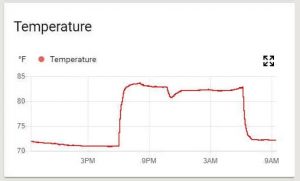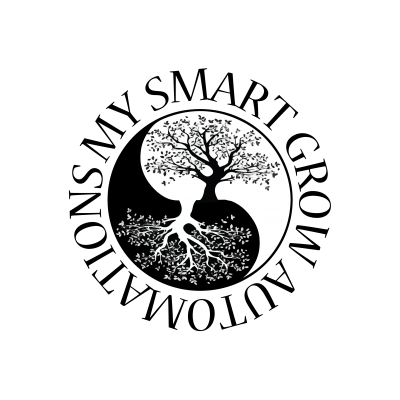Importance of temperature on plant growth

Temperature 68°f – 85°f
Needed Equipment to Monitor: (analog) Thermometer or (digital sensors w/ logging): My Smart Grow Multi-sensor
Needed Equipment to control: Air conditioner, and or Heater, Tent with inline Fan, combined with the My Smart Grow system
As general rules say, keep the grow environment at a 10 degree variable range. Allowing night temperatures no lower than 68°f , (the plant will stop or slow overall growth tremendously at low temperatures). At the same time, do not allow the daytime temperature get any higher than 85°f, (or you will “heat stress” the plant which will stop growth without additional Co2 supplementation and possibly damage plant cells irreversibly).
The absolute tolerated high and low temperature of different plants can vary from strain to strain depending on its genetic origins, and the length of (high/low) temperature exposure. (We personally have found most plants are more tolerant to low (nonfreezing) vs high (85f-95f+) temperature exposures and are slowest to recover unless you are using Co2 supplementation greater than 1500 ppm. Make sure to know your plants needed environment before planting for the greatest chance of success.
Keeping the ideal temperature in a range of 82°f-75°f during “lights on” and a swing of no more than 10°f with “lights off” will give you the most vigorous growth when combined with the other standard growing parameters while not supplementing Co2. This will require modification to HVAC controls in the environment to create a perfect growing environment for the plant.
Plan your “lung room” temperature accordingly. Make sure you have enough fresh air entering your your tent or grow room to allow it to “breath” out the stale/highly oxygenated air and replace it with temperate Carbon dioxide rich air to breath in. We call this gapped air space around the gow environment, the “Lung Room”.
The “Lung Room” is the air conditioned space where the around outside your tent is the “lung”, and this outer “lung room” provides your inner “lung (grow space)” with the air which it inhales. Your tent/lung environment will never be able reach lower or higher temperatures than what the “Lung Room” can provide, and is where you need to focus your attention with either AC or taking in cooler air from outside the gor environment via a duct fan to keep the inner “lung room” fresh and temperate, and in turn the inner grow space.
You will need to add an AC unit if your lung room temperature is too high (Calculate your average summer temperatures combined with 1000w HID lights and ballasts in a room with only ambient air…), or ad a heater if the temperatures are too cold. (LED lights might have this need in a basement during winter due to the LED’s low running temperatures compared to HID lights). Having a variety of lighting and environmental controls can pair nicely during the winter to summer swing. Some might use an LED or 315w/630w (LEC/Ceramic Metal Halide) array in the summer, and a double ended HID in the winter to provide the needed heat control. Others who are growing in a temperate climate or those with a whole house HVAC may only need to cycle the air from the room with a continuous low power fan pulling our air in order to keep the entire grow area in a desirable range. More airflow is OK, just not energy efficient as long as the air is widely dispersed and the plants are not directly in front of the airstream and beating them down.
Next blog will cover Relative Humidity-
Tags: 1000w, 315w, ac, air conditioner, flower, Grow light, grow space, growing indoors, heat stress, High Pressure Sodium, hvac controls, inline fan, LEC, LED, log, logging, lung room, Metal Halide, MH, monitor, my smart grow, night temperatures, perfect growing environment, Temperature, tolerated temperatures, vegative
